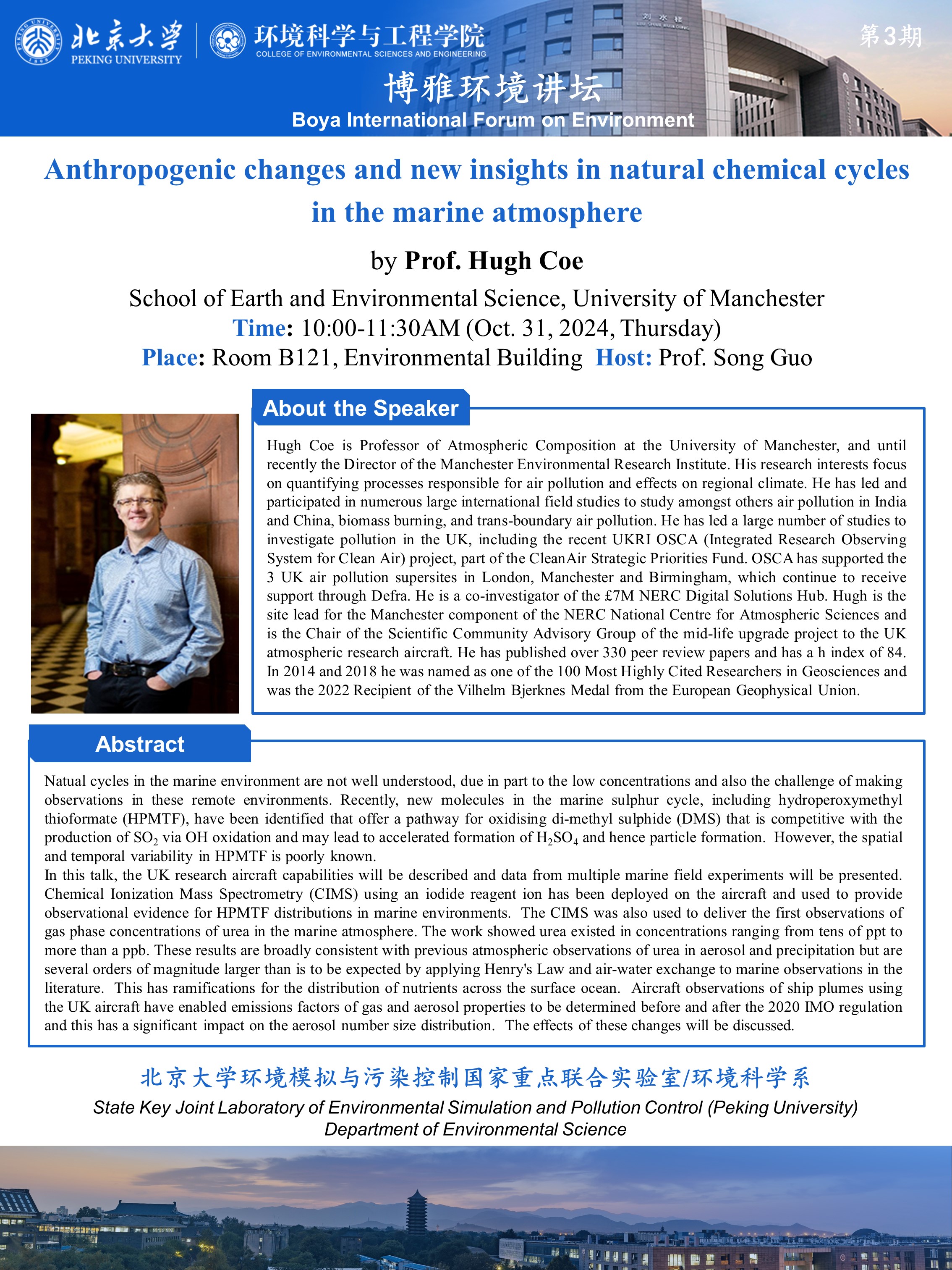
Speaker: Prof. Hugh Coe (School of Earth and Environmental Science, University of Manchester)
Time: 10:00 - 11:30 a.m., Oct 31, 2024, GMT+8
Venue: Rm B121, Environmental Building
Abstract:
Natural cycles in the marine environment are not well understood, due in part to the low concentrations and also the challenge of making observations in these remote environments. Recently, new molecules in the marine sulphur cycle, including hydroperoxymethyl thioformate (HPMTF), have been identified that offer a pathway for oxidising di-methyl sulphide (DMS) that is competitive with the production of SO, via OH oxidation and may lead to accelerated formation of H,SO and hence particle formation. However, the spatial and temporal variability in HPMTF is poorly known.
In this talk, the UK research aircraft capabilities will be described and data from multiple marine field experiments will be presented. Chemical Ionization Mass Spectrometry (CIMS) using an iodide reagent ion has been deployed on the aircraft and used to provide observational evidence for HPMTF distributions in marine environments. The CIMS was also used to deliver the first observations of gas phase concentrations of urea in the marine atmosphere. The work showed urea existed in concentrations ranging from tens of ppt to more than a ppb. These results are broadly consistent with previous atmospheric observations of urea in aerosol and precipitation but are several orders of magnitude larger than is to be expected by applying Henry's Law and air-water exchange to marine observations in the literature. This has ramifications for the distribution of nutrients across the surface ocean. Aircraft observations of ship plumes using the UK aircraft have enabled emissions factors of gas and aerosol properties to be determined before and after the 2020 IMO regulation and this has a significant impact on the aerosol number size distribution. The effects of these changes will be discussed.
Source: College of Environmental Sciences and Engineering, PKU
